The transcript from this week’s, MiB: Joanne Bradford, Domain Money, is below.
You can stream and download our full conversation, including any podcast extras, on Apple Podcasts, Spotify, YouTube, and Bloomberg. All of our earlier podcasts on your favorite pod hosts can be found here.
~~~
Barry Ritholtz: This week on the podcast, I have an extra special guest. Joanne Bradford has had a fascinating career in technology, marketing and finance. She was Chief Revenue Officer at Microsoft. She was Chief marketing officer at SoFi. She had very senior roles at places like Yahoo, Pinterest, demand Media Business Week. She has a number of investments as as really a entrepreneur and a venture investor. Domain Money is, is one of the big ones. She’s also involved with wealth.com, and I could, I could give you a long list of all the things she’s, she’s done Kahoot, super telly, just all, all these really fascinating startups. She has had just an unbelievably interesting career and is one of these people who looks at every role she’s had in a company as a challenge and an opportunity. And she has really managed to accomplish tremendous things, not just at Microsoft, where she ran MSNs advertising and marketing, not just at Yahoo or Pinterest, but even a small startup like Honey, which she was president and sold pretty quickly to PayPal for $4 billion. Anytime I get to speak with Joanne, I always come away feeling like I’ve learned so much and, and gained so much from the experience. I found our conversation fascinating. And I think you will also, with no further adieu, my discussion with domain monies. Joanne Bradford
Joanne Bradford: Thank You so much, Barry. It’s an honor to be here.
Barry Ritholtz: Well, it’s a privilege to have you, you and I had a conversation not too long ago, and so much of what you do is so interesting and so fascinating, and so beneath the radar of the average investors, you know, horizon. I thought let’s bring in Joanne and talk about what a fascinating career you’ve had. But I gotta start with your education. You, you started, what is that? San Diego State studying journalism and advertising.
Joanne Bradford: I was a journalism major because it was the easiest major at the
time, and I went and took advertising courses and went to work at my college newspaper. One side were the writers, one side were the ad salespeople. They paid the ad salespeople. So I went in there and didn’t turn back for 20 years. And so I’ve sold billions of dollars worth of advertising in my life.
Barry Ritholtz: So Southern California in the late 1980s. Yeah. What was the tech world like
there?
Joanne Bradford: There was no tech world really. I mean, you know, after I graduated from college, I went to work in the Macy’s management program because they were the only people that were hiring. It was either go drive a Frito-Lay truck or a Macy’s management program. I did that for two years. It was fun. Learned how to, how to buy merchandise. But my love of advertising called. And so I ended up working at Business Week Magazine for almost 13 years.
Barry Ritholtz: This was the previous business week before its acquisition by Bloomberg [Yes]. So it was part of, was part of McGraw Hill; who also also owns S&P. {Yeah}. So what did you do at Business Week?
Joanne Bradford: They sent me to a little known land called San Jose in Silicon Valley to sell advertising. And I sold ads to people like Hewlett Packard and Cisco when they had a hundred employees. And I went to Seattle and called on a little company called Microsoft and learned everything I could about technology. Sun Microsystems was the hot ticket at that point in time, and I talked business week into buying me an Apple computer and signing me up for an AOL account. And I’d never looked back on tech.
Barry Ritholtz: In hindsight, all these ads you sold, you should have had them pay for it in stock and it would’ve worked out even better.
Joanne Bradford: Well, you do learn a lesson about equity-based comp, and I finally got that right later on, which we can, which we can talk about. But yeah, I was making commission at that point in time. So when I was a salesperson at Business week, I sold more ads than anybody, and I made $2 million commission when I was 29 years old.
Barry Ritholtz: That’s a lot of money. It was, how do you go from business week to Microsoft?
Joanne Bradford: Well, BusinessWeek wanted me to move to New York to become the
associate publisher. 9/11 happened. My husband wasn’t that excited to come to New York City, and so I said, I have to go beg, borrow, and steal my way into a technology company. So I got the job as Chief Revenue Officer of MSN in 2001. Nobody believed the bust had happened. Nobody was buying spots and dots or ads on the internet. Right. And so I went to work there, and over the course of seven years, I grew it from nothing to two and a half billion dollars in revenue. We did a deal with Facebook to represent them. That led to their investment. Microsoft’s investment in Facebook. We did video ads, the first video ads, we formed the Hulu consortium. There were a lot of firsts during those periods at Microsoft. It was an amazing, amazing time in my career. And Microsoft was an, an insanely good company to work for to learn how to work at an engineering led company.
Barry Ritholtz: Huh. Really, really intriguing. You know, we look at these economic busts or these market crashes, and it’s obvious in hindsight what spectacular opportunities there they were. What did you see in oh two or oh three that led you to say, I know, let me find one of these broken down tech companies and start something fun there.
Joanne Bradford: Well, you know, so at Microsoft when I went there, I knew that people were spending more time online, and I knew that advertising dollars would eventually follow that we had to convince the industry, and I had to go convince people like Proctor and Gamble and Coca-Cola and Walmart that they should spend money with Microsoft. They were spending most of their money with Yahoo. Google wasn’t on the scene yet. And so we did crazy things. We did flyovers on the front page ’cause that made marketers feel good and feel like they were doing something.
Barry Ritholtz: Flyovers means someone lands on the page and it’s like a takeover.
Joanne Bradford: Yeah. Takeovers. Like that was the hot thing. You could sell a takeover for a million dollars a day at that point in time. So I, you know, I, I learned so much and Microsoft was like a startup inside of a big company for me. For me. I worked my last job there. I worked and reported to Satya Nadella, which of Amazing. Yeah, amazing. He’s done great things.
Barry Ritholtz: Yeah. As the third CEO of of Microsoft really has led them back to great success. If you’re doing MSN at Microsoft, how do you end up at places like Yahoo and Pinterest?
Joanne Bradford: Well, so when I went to leave Microsoft, I’d sort of done everything that I could do up until I was a corporate vice president. There was 125 of us, and I was like, I wanna go really be an entrepreneur. I wanted to start something. And I went to a little startup that was a failure. Like, not all startups are great. This one had taken a hundred million dollars, didn’t really have a product. And I spent six months there and said, get me out of here.
Barry Ritholtz: By the way, safe to say, most startups are gonna crash and burn. Right?
Joanne Bradford: Most are gonna crash and burn. You know, it’s romanticized. It’s hard to navigate as an employee. You don’t know what to ask for, what to look at. So then I, I knew the Yahoo folks, Jerry Yang and Sue Decker asked me to come in and help them in 2008. Again, a giant crash, like right. So I went to Yahoo and worked on their revenue and sales and marketing for a few years. And then I really still had the entrepreneurial itch. So I went to a company called Demand Media, which was sort of the first reverse engineering of the algorithm. We looked at what people were searching for, you know, how to make a smoky eye, how to write a check, how to make a strawberry margarita. And then we’d write that content and it was called Demand Media. And we took it public. We were doing $450 million in revenue. Google changed the algorithm and wiped out the business. And so everybody out there, that is AI dependent. Remember, the algorithm can change
Barry Ritholtz: It’s really true. If you are at all interested, you and I have talked about LinkedIn versus Twitter. If you are on someone else’s platform as opposed to your own website, you are absolutely at the mercy and the whim. It doesn’t matter if it’s Elon Musk or Google just tweaking to get better results. If the algo changes, and it affects how often people see your work on that platform, it’s a very difficult set of circumstances.
Joanne Bradford: Yeah. Everybody out there that has dependencies on those platforms needs to figure out alternative channels and alternative ways. And, you know, that is just an important, important task for people. You can’t just optimize, you know, Google will change the algorithm, they’ll change the UI, they’ll change the rules, you know, regulatory changes will come. I’ve seen every change possible impact businesses. I mean, remember when we used to sit around and talk about the Facebook newsfeed, like it was, you know, we don’t do that anymore.
Barry Ritholtz: Right. But to just put a little little meat on the bones. This isn’t just Google and Facebook. It’s anybody that’s a creator and influencer producer of content. So it’s gonna be YouTube and Instagram. Yeah. And TikTok and LinkedIn and I don’t know what comes next, but whatever comes next, it’s their platform. Stop and think about how much time and effort people put into things like Facebook or Twitter or LinkedIn. And you have zero control over what that final product looks likes.
Joanne Bradford: That is correct.It’s really shocking.
Barry Ritholtz: So you, you see the change in Google, it, it crushes demand media. Yep. Where do you go from there in your survey of the best tech companies in, in Silicon Valley? Well,
Joanne Bradford: At that point in time, I was like, wow, I’ve been selling internet ads for a long time. I would like to do something different. So I went back to my roots and I became the president of the San Francisco Chronicle. And why I did that was because I felt like if you’re a Bay Area native and you use SFGate, it is not a great product. Right. And I really felt like San Francisco and the tech world should have a bigger voice.
Barry Ritholtz:It’s a world class city. It should have a world class media it, right.
Joanne Bradford: It, it should, you know, at that point in time, I was the independent director for Kara Swisher and Walt Mossberg. I helped them leave the journal, raise their money, and ultimately I helped them sell it to Vox Media. But I had written a strategy at, at San Francisco Chronicle for Hearst to sort of reinvent that. And there wasn’t really a ton of appetite for it. So I spent six months there. Again, I do not mind cutting and running if it’s not working out right for me. Pinterest had called several times. I loved Pinterest. I knew Pinterest would be big. So I went to Pinterest as the head of partnerships, I set up and sold, I hired 125 ad sellers, account managers and a team to go out and sell the first pin promoted pins. My first hire there is now the Chief Revenue Officer. There are Bill Watkins. Wow. He’s great. Great guy. And we went out and sold the ads, and I knew that Pinterest would be big. I went in there and the valuation was below a billion dollars. And I left after two years. And at two years the valuation was $13 billion. And so that was a fun run. Right.
Barry Ritholtz: I’ll say that’s a hell of a run. Right? Yeah. One to 13. Yep. And then what eventually was the bridge between Pinterest and SoFi in 2015?
Joanne Bradford: Well, again, I was, I, you know, sort of took stock and I said, look, what the heck do I do now? I’ve sold a every ad, I’ve sold videos, I’ve sold, you know, keywords, done deals with every single person in the world, in the ad tech business. And so I said, I need to go learn something completely new, and I wanna work in an industry with new people and new ideas. And a friend of mine that I knew from Business Week said, Hey, I work at this little company called SoFi, and they do student loan refi. And I’ve always been passionate about money. I think people should really, you know, be educated about money, think about their money. You know, student loan debt is one of the biggest problems in America. And so I said, oh, this is interesting. So I met the founder and I said, look, I don’t care if you fire me, I just wanna try to do this job. He was a hedge fund guy. And he said, look, I don’t know anything about marketing. I want you to build this brand like it’s a multi-billion dollar brand. I want you to take risk and let me know what the risk is. I want you to hit the cac, which is customer acquisition cost, and I want you to make sure that we underwrite loans at quality so we can sell them on the capital markets. And I said, I don’t even know what you’re talking about, but I will get it done.
Barry Ritholtz: So that’sVery much like what takes place with Freddie Mae and, and Fannie Mae, where they’re buying conforming mortgages. So the banks now have the cash to make more loans, and then they sell it to Wall Street. This is sort of like Sally Mae, same basic concept. Only private sector.
Joanne Bradford: Private private sector. So we would, you know, and, and the premise of SoFi was that students that went to good schools and were getting law degrees and MBAs and had high student loan debt and engineering schools were not going to default on their loans. That they were going to be employable for as long as they wanted employment. And they were, they, they weren’t gonna default. And so we really underwrote great qualities of loans. And so we did that. And then we got into the personal loan business, which we were, when I left there, we were doing about $3 billion a month. Wow. I was there 2015. There were 75 employees. When I joined, we were doing about 10 to $20 million of loans a month. When I left, we were doing 1.5 billion of student loans and, you know, about 1.5 of personal loans of volume a month.
Barry Ritholtz: Wow. That’s, it’s a lot of funnel. That’s a lot of funnel billion a year. That, that’s a lot.
Joanne Bradford: And so, you know, you had to learn how to, you know, make deals, drive lead gen, build a community. And I would say that SoFi was and is beloved amongst that segment that helped them refi their loans. A very interesting fact that, that we learned while I was there is that people, if they had a lot of money at play, they would refi their loans, but if it was a little bit amount of money, they would say, oh, it’s kind of a pain. I’m not gonna do it. Right. And so the magic number was $388 a month. If you could save them that, then they thought it was worth it. Which I thought was interesting. Like, why wouldn’t you save $200 a month, you know, to refi your debts?.
Barry Ritholtz: Behavioral psychology…
Joanne Bradford: I know, I thought I, I thought you’d like that.
Barry Ritholtz: Yeah. No, I love that stuff. Yeah. Before we talk about the chief revenue experience, let’s talk a little bit about Honey. $4 billion for a relatively young startup. That’s a giant win. Tell us a little bit about your relationship with Honey. You were, you were president of Honey, is that the title?
Joanne Bradford: I was the President of Honey.
Barry Ritholtz: How did you find your way to Honey and what made you think, I know PayPal, this is a perfect fit.
Joanne Bradford: So how I ended up at Honey in Silicon Valley, Cheryl Sandberg used to hold dinners. Women in Silicon Valley dinners where we’d all meet each other. I met an amazing woman there. Her name was Emily, is Emily White. She works at Anthos Capital. She had held the COO job at Instagram and Snapchat and was an early investor in Honey. And when I told her I was leaving SoFi after four years, just ’cause I was done with my financial services chapter until now, and she said, Hey, I’ve got a company for you in LA that I’m just about to invest in with two great founders. Can you go meet them? And I said, what’s it about? She said, well, it’s a coupon code company. I said, absolutely not. I, who wants to work on coupon codes? Are you kidding me? And she said, no, no, just go meet them. And I went and met them, George and Ryan, two of the best founders I have ever worked with in my life.
Barry Ritholtz: And, and to be fair, when you say it’s a coupon company, it really isn’t. It’s a web technology that operates in the background. Okay. Like a coupon, but it, it’s really a shopping search engine to find better prices. Am I, am I doing it justice?
Joanne Bradford: You, you are Barry. So their insight was that finding a coupon code was a pain it. Yes. Right. And you always want one. And so they built a browser extension on Chrome that you could download in two clicks. And when it detected checkout, it would say Pull, look at all the coupon codes, query them all and apply the right one. And so it was a, a great service to consumers. And what happened was we started launch, we launched it with gamers playing YouTube on their desktop. And a little gamer called Mr. Beast.
Barry Ritholtz: Okay. Giant!
Joanne Bradford: So we were his first advertiser, and we did a deal with him. He made an ad, you can go look it up. If you look up Mr. Beast Honey ad an ad comes up, his collective ads, I think have been seen, you know, I’m gonna say billions, billions. Three plus close to 4 billion times. Wow. Every kid in America knows what honey is. Every kid in America was telling their moms and their dads, they needed to download coupon. You know, honey, in order to save money, the marketing, the team did it. I didn’t create it, but they did a great job of telling a story very clearly to the consumer and getting them to take action. They started with gamers, then they went to YouTube, makeup people. Who doesn’t love a Sephora coupon? Did you just get to the Sephora coupon code for the sale this week, Barry? That’s like, it’s like crazy. I missed that one this week. You missed that one.
Barry Ritholtz: I will tell you, it’s a annoying as hell as you’re about to click the purchase. Do you have a coupon code? I don’t know. I didn’t think of it. But now that you’re mentioning it, should I have a coupon code?
Joanne Bradford: Well, you, you, they should tell you there aren’t any, you know, they should say there are none. ’cause then you’d feel better right. By saying, is there one you feel like you’re missing something?
Barry Ritholtz: There have been times where do I really wanna buy this mailbox for $300 without the 20% off coupon code? Yeah. The, the prompt loses them a sale.
Joanne Bradford: It does. And you know, cart abandonment is a big deal. And so this helped improve that. The revenue model was affiliate. So we got a cut of the transactions that would go through there.
Barry Ritholtz: Plus the data must be astonishing.
Joanne Bradford: TheData, they were very clear, the founders, that they were not going to sell the data and they were going to protect the consumer at all costs.
Barry Ritholtz: But, I mean, the data to the company AB Absolutely. Absolutely. That’s using the code. You could say, here’s how we’ve changed. Yes. The cart abandonment, here’s how the upsells have gone. Here’s how the average carts like that internal data, I don’t mean like the Facebook reselling stuff Yeah. That most people over 40 are concerned about, but just the how can we make you better as a retailer?
Joanne Bradford: 100%. And you saw, you know, you saw where people came from, how they executed it. And so we built some really great products for the merchants. The funding story of Honey is interesting. The founders, George and Ryan went to every venture capitalist in Silicon Valley, and everyone turned them down
Barry Ritholtz: Because it was just, oh, coupons. Is that what the thinking was?
Joanne Bradford: No, they said they sort of turned their nose at coupons and they also turned their nose at desktop, not mobile. Mobile was the thing at that point in time. And they were like, everything must be mobile. It would be like, today you sang we’re doing something old. And everybody’s like, everything must be AI today. Right? Right. So everybody said no. And so they raised money, they found Anthos. Anthos got on it. There was a bunch of other private investors that did and did very, very well. So let’s go to the part where PayPal comes into it. So everybody’s like, why? Everybody was surprised when the headline came out. PayPal buys Honey for $4 billion. Shocked. And I say to them, don’t be shocked. What Honey had was 20 plus net new active users that was PayPal’s metric at that time, 20 plus, 20 million Net new active users
Barry Ritholtz: Wow. That they could add to PayPal’s numbers.
Joanne Bradford: It was a profitable business. So it didn’t have an negative impact to the P&L. And it also brought new engineers and new thinking and a different shopping strategy to PayPal. So, you know, people always come to me or they’re like, oh, this company should buy that company. Right. And I just go through the checklist. Do you have a ton of users? Do you have some path to profitability or better yet profitability? Right. And do you have strategic thinking and or talent that would give insight? And so PayPal was smart. It checked all the boxes on that. So it, it was sort of a no-brainer. We did, you know, it was a short time after I joined that we made the transaction and it was a short time before covid. We closed the deal January 2nd, 2020
Barry Ritholtz: And, and I’m assuming Covid didn’t really hurt them when everybody’s home. Covid was excellent for honey, right?
Joanne Bradford: Everybody’s home shopping online. Yeah. I gotta think turns out, oh, we’re not hurt by this acquisition. This is right in, it was great. What’s Happening? We were, we were, our biggest problem was creating ads, new fresh ads for honey. We, every employee was shooting ads in their house. I was like, kids we’re making honey ads on our iPhones. And it was a really, really fun, fun time to, to be there and to be part of such an exciting acquisition. So what it really taught me, you know, out for your listeners out there is, you know, when I went in to talk to that company, I asked for three things. I said, can I see the last three board decks and can I see the roadmap? And can you show me your revenue and your profitability? And they had no problem with it. So as a senior level employee or a potential board member of companies, that’s what I do. I go look through those because over a course of nine months, you can see if people addressed a problem, seized an opportunity, know how to talk about things, know how to think about things. And the honey guys passed all those things on with flying colors for me. And they were awesome human beings.
Barry Ritholtz: So you are talking the way many venture capitalists talk, but I know you
well enough to know you don’t really think of yourself as a vc. I know you’re an investor in a lot of early stage companies, but when someone says, what do you do? Your answer isn’t venture capital.
Joanne Bradford: No, I’m a, like, I think I invest with my human capital, right? I try to get, you know, a significant stake in a company and something that I believe in and something that I can help accelerate. So it, it is a little bit the same process and how I spend my, my time and effort. And it has to be aligned with, with my values. You know? So that’s how I think about it. That’s how I’ve made my choices. I’ve had a few pivots in, in my life on it that have served me well. And I think, you know, I think you can figure out almost anything If you’ve had experiences in startups and doing things like you’ve, you’ve built many things. You know how to do it, you know? Right. What, what’s gonna happen. And you have to be very open to it. So I was very, very open to coupon codes. I was open to Pinterest. I was open to a financial engineered product for student loans. Right. You know, I like things that have not been done before. I like things that are white space in a market. And I think there’s just a, a giant opportunity for talent to find those and to think about it. Don’t take the first obvious one. ’cause that’s kind of painful.
Barry Ritholtz: Right. So let’s talk about some other startups that you have advised or are advising right now. Yeah. What is Super?
Barry Ritholtz: Joanne Bradford: Oh, Super. they help you save money on travel, and then they have a subscription service that helps people earn money. It’s a company based out of Toronto with a really great young founder duo that have built something to help people get deals every day. And it’s a, it’s an app that is helpful in ways that Google isn’t. And they’re trying to combine all those experiences and give you ultimately a, a cash management tool someday. Like everybody will eventually be a financial services company or an advertising company. Like that’s just the way it goes. Like, I don’t Right.
Barry Ritholtz: Joanne Bradford: All roads lead to those, all
00:28:10 [Speaker Changed] Roads lead to this. So
00:28:11 [Speaker Changed] Let’s talk about a financial company. Yep. wealth.com.
00:28:15 [Speaker Changed] Wealth.com, a really great company that is building AI technology for
making trusts, wills estates, easy to manage lawyers spend and run up bills to collate your paper to show
you where things are. If you wanted to leave me your watch or I wanted to leave you a Birkin, it would
cost a lot on the lawyer in wealth.com. You can go in and change it very simply. And
00:28:46 [Speaker Changed] It’s different in every state. There are different rules, right.
00:28:48 [Speaker Changed] They have, are compliant in every state. It is a, a very strong platform for
advisors, RAs, and, you know, a lot of them are using it at domain money. We use it because most
people don’t have trusts set up properly. And so they have done that and they’re a B2B company right
now. And I think eventually they’ll be a B2C company.
00:29:15 [Speaker Changed] So let’s talk about domain money. Yeah. Since you brought that up, tell us a
little bit about what you did starting up domain money last year and some of the All stars you’re working
with.
00:29:28 [Speaker Changed] Yeah. So I worked with a certified financial planner called Katie Song when I
was at SoFi. And she did a plan for me personally and answered the questions, can I retire? Can I send
my kids to school? Should I buy another home? Can I go on vacation every year for a month? Like
literally went through my budget, my spending, my potential spending and my investments. And I loved
it so much that I said, let’s build a business when I have a moment in time. And so we started working on
it. Then Adam Dell was working on domain money. He came to me and said, Hey, I’m working on this. I
said, I’ve got, you know, this product with Katie Song. We put them together in November. Now
00:30:15 [Speaker Changed] Let me interrupt you and just point out for the listener. Adam Dell has a
brother named Michael.
00:30:23 [Speaker Changed] I’ve never met Michael,
00:30:25 [Speaker Changed] Who’s, who did something with computers back
00:30:27 [Speaker Changed] In the nineties. Yeah, I think so. Something like that.
00:30:28 [Speaker Changed] I think so. And he also happened to set up a little thing called Marcus at
Goldman Sachs. He
00:30:34 [Speaker Changed] Did, he sold, Adam was a vc and then OpenTable was one of his runaway
successes. And then he sold Clarity money to Goldman Sachs and ran Marcus for a little while. And very
00:30:49 [Speaker Changed] Different OpenTable.
00:30:51 [Speaker Changed] Very different.
00:30:51 [Speaker Changed] But that’s a, just a pure technology to drive reservations. Yeah. Which I
don’t know anybody that doesn’t have that on their phone. Right. I mean, literally it’s ubiquitous.
00:31:00 [Speaker Changed] It, it, it is, you know, resi versus OpenTable. We can have a you discussion,
you
00:31:05 [Speaker Changed] Gotta use
00:31:05 [Speaker Changed] ’em both if you
00:31:05 [Speaker Changed] Need
00:31:06 [Speaker Changed] Competition. Of course, of course you do. It’s like, it’s like an Amex and a
Chase card. You have ’em both. So Adam, really, we have a, a big vision that there’s a very big
opportunity out there for people that are not in need of an a UM advisor and that don’t wanna do it
themselves. There’s a giant gap in that market, sort of, you know, the Home Depot, Lowe’s of financial
services, right. Where you, you and, and you want a little more help, the equinox of it, the, the pre novo
of it where you, you need help, but not forever and not at the expense. And I manage my money both
ways. I have a UM and I do some, you know, flat fee on my own. And so we built this product called the
one page plan that will literally analyze what you spend down to your DoorDash, down to your credit
card, down to your Amazon, and then look at your investments and tell you you need to save $63,000 a
year for the next 10 years to get even close to where you’re gonna be.
00:32:12 And here’s the five action items you need to take. And so we offer that plan for $2,500. If it’s
more complex, we offer a strategic plan or a full comprehensive plan where we’ll help rebalance and,
and do your portfolio for $7,500. We have, you know, people coming to us every day just on word of
mouth. People are confused and overwhelmed. They, well, they love a, you know, TikTok, you know,
budget tool. They can’t do it themselves. They need more help. Hmm. And so that’s the place in the
market that we’re serving. You know, I’d say if the dis, if I had to describe the consumer, they’re sort of
38 years old and they wake up and they go, wait a minute. Crap, I didn’t, I didn’t do all these things.
00:32:57 [Speaker Changed] Tax day was Monday, tax day was, what
00:32:59 [Speaker Changed] Did I forget? What did I forget? Why didn’t I set my Roth IRA up? Why
didn’t I start my college fund? You know, you put it off every day and you shouldn’t, nobody here that
listens to this show should not have a financial plan even if they did it themselves. Right. If they had
someone do it for them, you have to have one. Otherwise, you shouldn’t be listening to the show.
00:33:22 [Speaker Changed] You, you have some amazing partners with this. I feel like I want to throw a
ringer in. ’cause Yeah. People are, are so some of the early engineers from Amazon Web Services Yep.
Are part of this. Mark Benioff, who’s certainly super well regarded out in sup, Silicon Valley, Palantir and
all that. Yeah. Some kid named Ashton Kutcher Yes. Is involved. Like, I’m trying to make up a name and I
can’t Yeah. That’s an incredible set of partners for what’s essentially not even a year old startup.
00:33:54 [Speaker Changed] Yeah. I mean, I think, you know, Adam’s track record and relationships were
able to attract quality investors and quality talent. And now we’re just trying to deliver an unbelievable
experience for people. If you don’t like it, we’ll give you your money back. But we have people that are
just delighted every day with it. And that’s the goal. You know, we want people to have more financial
control in their lives. It’s, it’s too important, you know, it’s, for me, it’s a value system and a belief system
and what you do with your money and how you think about it and how you live. And so that’s why I got
involved with, with domain money. And it’s, it’s been very rewarding.
00:34:35 [Speaker Changed] It, it, it sounds like it. So I wanna talk a little bit about when you were in
Silicon Valley and working as a woman in what was very much a male dominated technology field. And I,
I guess the thought was, I know, let me find another male dominating field. Let me, let me go to finance
and see what I could shake up there. But I use that phrase on purpose because I know you’ve been very
influential in different fields from the inside. Tell us a little bit about the evolution that we’ve seen in
technology and, and now finance.
00:35:16 [Speaker Changed] Yeah. Let, let’s just, in my early career, many rooms I went into, and still
today, I’m the only woman in those rooms. And so I take my responsibility pretty seriously that I have to
bring the voice of other women into the room. I work with an organization called The Female Quotient,
how it started. And everybody should go followed on social. They have viral videos. They had one go
viral with a hundred million views the other day. Wow. They started doing events at CES and South by
Southwest and trade shows all around the world where they created a place for women to go and
convene. And all of the power women went there. They called it the Girls Lounge. You could go in and
get a hair blow dry and a makeup and have a glass of champagne. It has since turned into the Equality
Lounge.
00:36:09 And they do programming in every one of those lounges. And they let everybody in. Everybody
is welcome. You don’t have to have a badge to the show. They’re like, look, if you’re in town, come by. If
you’re support staff and you can’t get into the party, we don’t, we don’t believe in that. So everybody
comes. It’s one of the most powerful places at CES at Davos, at South by Southwest. What it has
reinforced for me is that women need to convene, they need to support each other. They need to see
each other being successful and what, how that’s normalized. So for men, and I, Barry, you and I have
had this conversation, I think it’s important to, number one, if I ran a company and I was a man, I would
give them allowance or budget to go convene as women with other women in their industry.
00:37:07 Tomorrow I’m going to the CNBC change makers, which is their women initiative that is
launching this year, would be a great afternoon gathering and talks by other women that have made
significant changes for the year. And there’s just a great opportunity to network and connect at those
things. If the leader from your organization goes out and shows up in the community, it’s going to
attract other people from the community. Right. It’s, it’s pretty basic. And so that’s, that’s number one.
Number two is that you really have to give people responsibility. I asked for responsibility at every turn
in my life.
00:37:51 [Speaker Changed] I I was about to bring that up because you’ve told stories about Microsoft.
Yeah. You told stories that I’ve heard at Yahoo where you went to senior management and said, listen, I,
I have more bandwidth and here’s what I wanna do. Yeah. What are those conversations like? How, how
do they go? And is everybody always receptive?
00:38:12 [Speaker Changed] They’re not always receptive, but look, today, putting an idea down on a
piece of paper and sending it to someone is free. And what it shows people is how serious you are about
that idea and that you’ve put some thought into it. And those have been pivotal turning moments for
me in my career where I sat took pen to paper. And you can do it with AI now. So it’s not even that hard.
Right. I take notes on everything I do. I spit it into, I like Bard’s tone of voice better than chat GPT, but
that’s just me. And I’m like, okay, write me a proposal based on these five things I just saw and what
would it be? And then I’m like, eh, should I do this? Should I not do this? But I did the same thing in my
early days at business week.
00:39:00 I was like, Hey, we need to go buy a URL. Okay. We, and you know, like convinced business
week that we should put advertiser links on a page in the magazine. I’m like, I will get money for that
page of advertising. So we sold people’s URL listings on a page in business week. We sold a crossword in
business week. I was like, let’s put a crossword in there. I think it’s a good idea. You know, like you just
have to keep putting ideas forward and then people will see that. And so as, as a woman, I said, that’s
how I’m gonna break through. That’s, that’s what I’m gonna do.
00:39:36 [Speaker Changed] What happened in a place like Microsoft that was very much an old boys
club, it’s Bill and Steve and the rest of the crew. When you say, Hey, I want to convene a group of
women to talk about how we could do better at Microsoft, do they take it seriously? Is there a little
snickering? Like, what’s
00:39:55 [Speaker Changed] The response? No, they said, they said great. They said great. I, you know, I,
00:40:00 [Speaker Changed] This is post DOJ antitrust case. Yes. So there was a little sensitivity as to
how they looked in emails and elsewhere I would imagine.
00:40:09 [Speaker Changed] Yes. You know, I worked, I worked more closely with Steve there and still
keep in touch with him. And, you know, he, he has a woman, Gillian Zucker that runs his operation
there. That is amazing. Also, I think at
00:40:27 [Speaker Changed] The Clippers or
00:40:28 [Speaker Changed] Yeah, at the Clippers. Yeah. And the Forum now and Intuit Center. And has
just unbelievable responsibility. And is
00:40:36 [Speaker Changed] That a sea change from 20 years ago?
00:40:39 [Speaker Changed] Look, he always gave everybody opportunity. I I didn’t, I didn’t feel there
was any gender bias in his approach. Huh. Like, he was just like, you know, get it done, get it done. Know
your numbers, get it done. And, you know, I’ve always sort of worked for and signed up for tours of
duties with people that I felt were just like, yeah, get it done. And so I think it’s just important that you
give people the opportunity. And I don’t care if it’s, you know, male or female, but to put ideas forth on
how they want things changed. ’cause they see them, they know them better than you do. And like, I
saw the video opportunity, so I did a, a thing called Live Earth where we 7 7 0 7 where we beamed music
around for 24 hours. Oh
00:41:30 [Speaker Changed] Sure. I
00:41:30 [Speaker Changed] Remember. Yeah. That was, you know, I went to Microsoft. That was you.
00:41:33 [Speaker Changed] I had no idea
00:41:34 [Speaker Changed] I did that. I did that, I did that with Kevin Wall and Bobby Schreiber helped
me. And you know, we had every artist in the world doing that. And it was to promote Microsoft’s video
player and it was the largest streamed event globally until that guy jumped outta the plane on YouTube,
which was a long time. And I, you know, took the risk. It was, Microsoft was not a sustainability focused
company at that point in time. And they were like, huh Joanne, this isn’t so great. I’m like, I’m gonna pay
for it advertising. And I got General Motors to sponsor it. And it was a huge, it was a huge success. But
we wrote that up and took it in and presented the p and l for it and got it done. So it’s anything’s
possible when you put it to paper.
00:42:22 [Speaker Changed] So, so you are at maybe not a giant company like Microsoft, but a smaller
firm that maybe isn’t paying as much attention to gender issues. ’cause they’re, you know, they’re
swimming as fast as they can against the tide. And you bring up an idea, Hey, I want to convene the
women on your investment committee or the women who work in your, your sales group. What’s the
response like from companies and what are the net results when you get a group together like that?
00:42:53 [Speaker Changed] Yeah, I’ll, I’ll talk about the Pinterest experience. When I worked at
Pinterest, you know, I was much older than the average employee. A lot of employees were starting to
have kids and the moms were really sort of, you know, overwhelmed. Right. Because it was a startup
environment. We were going, going hard, hard, hard.
00:43:16 [Speaker Changed] And am I remember correctly, was Pinterest very much a female user base?
Yes,
00:43:21 [Speaker Changed] It was.
00:43:21 [Speaker Changed] Right. Like 80% some crazy number.
00:43:23 [Speaker Changed] Yes. And we were 30% women when I was there. Huh. So, which was
interesting. And the moms wanted to convene. And so I said, just give me an hour of meeting space. We
just want them to get together and share information and knowledge, things as basic as, you know, how
are you dealing with preparing meals for your kids? To my recruiter nanny, what she had to fire her
suddenly one day. And what do you do in that situation and how do you communicate that to your, to
your boss, your manager, in those kinds of environments? And I will say today that Pinterest has carried
that on. And I still talk to many of those women and I did a, a sort of a, a group talk for Pinterest the
other day where there’s many of those mothers that say that was the difference between this being
bearable and unbearable. For me, this was the difference between me feeling like I am failing at my job
or doing well at my job, that I have some common ground. And so let people find common ground. You
don’t have to control everything. And I just think women, mothers, caregivers really, really need to
convene and give them permission, give them space to do it because it will make them more committed,
better employees, and more productive on, on every level. Those things are not hard. They’re not
expensive.
00:44:51 [Speaker Changed] So I have to 0.1 thing out that I’m fascinated by you, and I don’t know if this
is coincidental or just a component of your personality, but it seems that each of your major career
events all seem to take place in these wild dislocations. So you start at Microsoft in the midst of the
dotcom implosion, terrible, right. Nasdaq down 81% peak to trough. Yeah. The next gig starts pretty
much in the middle of the financial crisis. Yes. And then the honey transaction literally day one of the
pandemic. Yes. Is it that you just see opportunities when there’s sort of mayhem and everybody’s
running around with their, with their heads cut off? Or is this just some crazy dumb luck?
00:45:45 [Speaker Changed] I mean, I’ve asked myself that question. You know, all of my friends would
tell me never to do the jobs that I took. Right. Okay. My youngest,
00:45:56 [Speaker Changed] Well, that’s some terrible advice.
00:45:57 [Speaker Changed] Yeah. I don’t take it. And my youngest daughter told me this, and it’s a good
friend of mine just wrote a book that’s titled it, nobody Cares what You Do or Where You Work.
00:46:11 [Speaker Changed] I have her coming in next month. Yeah.
00:46:13 [Speaker Changed] Sh
00:46:13 [Speaker Changed] From Bar Sports.
00:46:14 [Speaker Changed] Erica worked for me and with me for 10 years. Oh, I
00:46:17 [Speaker Changed] Had no idea. Yeah. That’s completely coincidental. Yes. I love, I love the title
of that book.
00:46:22 [Speaker Changed] Yeah. And so, you know, when I would lament about it, my daughter would
just go, mom, nobody, nobody cares. Like, nobody cares what you do, what you put on LinkedIn, what
you say, where you go. So you need to just really get over it. Kids
00:46:41 [Speaker Changed] Keep you honest, don’t they? It
00:46:42 [Speaker Changed] Keeps you really, really honest. And so, you know, I, I don’t think, you know,
when I started working, it was go to work, work responsibly, work up the ladder as far as you can go in a
company. I got up the ladder pretty quickly in a lot of companies to very senior positions. And then I was
like, wait a minute, do I wanna do this for the rest of my life? And the answer was no. The answer was, I
like the excitement of building, I like the excitement of new territories and new industries. And so that is
really sort of my larger calling on this stuff then like, am I a crazy risk taker? You know, jumping out of,
you know, corporate jobs, you know, playing the equivalent of that. No. Well,
00:47:30 [Speaker Changed] They seem to have worked out. So it’s not like, it’s not like you’re risk
embracing with no upside. You seem to be appropriately risk embracing or at least looking at with the
advantage of hindsight bias, looking at the track record, it seems that you took the right amount of risk
at the right time in the right places, or you’ve just been on an incredibly lucky run of dice. And I don’t
believe it’s the latter. I think it’s the former.
00:47:59 [Speaker Changed] Well, you know, I do think experience gives you something and I can cut the
line in in many things in figuring out how to get to the person, to the right group. I, I’m advising two
young women that dropped out of Stanford that you’ll hear about soon and help them raise money for a
very interesting product. And we were able to sort of short circuit the system and get them in front of
the right people very quickly. And, you know, I can bring that skill to, to a lot of different scenarios. And
so that’s what I, what I try to do. Right. And that the sort of three key areas I focus on my life or number
one is really financial wellbeing. I just, I want everybody to just makes your life better on every front.
You know, number two is really female leadership and you know, getting them to be all of us to be
confident enough to take risks and to like stand up and, and speak and not be afraid of the
consequences in those situations. And then the third category that we’ve talked a little bit about is I
really love resale luxury. And I think it’s, you know, a very big growth market. Well,
00:49:15 [Speaker Changed] You’re in the right city for it. If
00:49:16 [Speaker Changed] I was ever gonna be, I, I wrote a plan a couple years back to do an activist
takeover of the RealReal. I got some investors together. I just hate the way that a company is run. So if
there’s anybody out there listening, I really, I wrote a plan, but they have a $300 million convertible debt
note that triggers and a change of control. So I abandoned that. They’re private
00:49:37 [Speaker Changed] Right? You?
00:49:37 [Speaker Changed] No, they’re public. They public. They
00:49:39 [Speaker Changed] Weren went public.
00:49:39 [Speaker Changed] The real, real. Oh, so they went public. I was an investor. They went out at
like 2 billion. I think it’s worth, you know, 150 million today. I, I can’t even look at it ’cause it’s so painful.
Down
00:49:47 [Speaker Changed] 85% usually engenders a change in control.
00:49:51 [Speaker Changed] I understand. But so in the meantime, that market is gonna grow like crazy.
So I’m working on a few projects in, in that category. But, you know, I I I and it’s also a community based
product, right? Like people are buying from each other. There’s an unbelievable world of crazy stuff
going on on Instagram and social selling and those platforms. And I think that will be a, a big, big market
for a long time to come. So, you know, I I I feel fortunate that I can do what I wanna do and I get to sit
here and talk to you about it and like sort of look back on it and say, oh yeah, I was so smart. But, you
know, I, I just, I kept swinging the bat is really what it came down to.
00:50:30 [Speaker Changed] Smart, persistent, a little bit of luck. That’s a great combination. Tell us
what you’re streaming these days. What are you watching or listening?
00:50:38 [Speaker Changed] I am watching the new look because I love fashion and I love history, so I
love a documentary. So that’s what I’m watching these days.
00:50:48 [Speaker Changed] Have you watched, what is it Palm Royale on? Not yet. If you wanna see a
just lovingly photographed set of fashion and just great. The way it’s done is spectacular on the list.
Spectacular on the list. Let’s talk about mentors who helped shape your career.
00:51:09 [Speaker Changed] There was a guy, I was on the board of care, which is the world’s largest
NGO for six years. And there was a really excellent McKinsey partner that ran the board practices Paul
Jansen. And he taught me how to be a good board member. Hmm. And being a good board board
member means you don’t talk too much and that you are supportive in critical moments of decision. So
he was one. I think, you know, Steve Baumer taught me a lot about how to think in an engineering
mindset and think about technology. You know, I, I have, I think an entrepreneur and someone that
starts a company is sort of the bravest soul in the world right now. So anything I can learn from them I
do.
00:51:52 [Speaker Changed] Huh. Really interesting. Let’s talk about books. What are some of your
favorites? What are you reading right now? What
00:51:57 [Speaker Changed] Am I reading right now? Midnight Express a a tale about someone that
helps her sister through hospice and then takes mushrooms to overcome depression and anxiety.
00:52:09 [Speaker Changed] So not the seventies era movie about
00:52:13 [Speaker Changed] No, no, no.
00:52:14 [Speaker Changed] About bringing has
00:52:17 [Speaker Changed] No, no,
00:52:18 [Speaker Changed] No. Totally different.
00:52:19 [Speaker Changed] Yes. Totally different, huh?
00:52:20 [Speaker Changed] Yeah. And, and Gimme One More
00:52:22 [Speaker Changed] Financially Fearless by Katie song, which was written out of a need
Facebook group. Moms would ping her every day about financial advice. So she sat down over a
weekend and wrote a book for them. And we self-publish it and we give it to every tech mom we know.
So they have a financial
00:52:41 [Speaker Changed] Plan financially. Fear, fearless. Yeah. And let’s, let’s, let’s throw a bone into
Kara. What, what your friend Kara Swisher, what’s her new book that’s Out
00:52:49 [Speaker Changed] Burn? Who Doesn’t Love Burn? Right. You know, I told Kara I was coming
here today. She’s like, Barry is a very good podcaster. I’ve been on a few,
00:52:58 [Speaker Changed] I have to get her back in to talk about the book ’cause it’s literally, I just
finished a book for next week’s podcast. Yeah. And her book is literally next in my too.
00:53:08 [Speaker Changed] I’m in the book. I’m in the book. I know. So the book was fun. You know,
Kara is, Kara
00:53:14 [Speaker Changed] Is, she’s fearless. She,
00:53:15 [Speaker Changed] There is nobody more fearless than Kara Swisher.
00:53:19 [Speaker Changed] She absolutely does.
00:53:20 [Speaker Changed] She, there’s nobody,
00:53:21 [Speaker Changed] She names names and leaves her. And then
00:53:25 [Speaker Changed] Also loves work, loves to invent, loves to be ahead of things, really a, a very,
very sharp person.
00:53:35 [Speaker Changed] V, very much so. So our final two questions. What sort of advice would you
give to a recent college grad who is interested in a career in fill in the blank finance, technology, startups
venture? What, what’s the advice to that recent graduate?
00:53:54 [Speaker Changed] Yeah. Do your research. So if you wanna go into finance, there’s two
women that run a, a Instagram channel called Wall Street Skinny that teach you how to get jobs and
money. You should have them on the show. They both worked in it.
00:54:08 [Speaker Changed] Wall Street, skinny,
00:54:08 [Speaker Changed] Wall Street skinny, they’re amazing. They always cite you, but they teach
you the ins and outs of how to get a job in finance on every front. I think if you were going to get a job at
a public company, you should read their annual report.
00:54:23 [Speaker Changed] The company itself. You stop the company, you go on a a, b, C bank read
ABC Bank’s annual report,
00:54:28 [Speaker Changed] 100%. Like first stop, first stop on the hip parade, go read the annual
report. It’s their strategy document’s. It’s what they tell people. If not, that’s
00:54:37 [Speaker Changed] Very, that’s very astute.
00:54:39 [Speaker Changed] You have to do it right. Like you read it, you are further ahead than most
employees there. Wow. So do your research. Right. You know, I’ve gone deep into, you know, filings like
SEC filings. Like I, you know, I, before I go work with a company that’s public, I look at every execs comp
package. Like I love to, you know, dumpster dive through SEC filings. It’s not that hard to do. Set your
alerts, so do your research. Know what the person cares about, knows what the company cares about
and have interest in them and also bring them ideas. My daughter was once looking for a job and a
freelance job and I said, just remake the person’s website. It was a company I invested in their website
drove me crazy and she’s a designer and I said, he’s not gonna tell you what he wants, so just do it and
send it to him. So she did it and sent it to him and he hired her to do that project on the spot, right?
Yeah. And she’s like, I don’t wanna do spec work. And I’m like, well, it’s, when you’re starting off, you
have to do some spec work. Right. It’s just the way it is.
00:55:43 [Speaker Changed] That, that’s tremendous advice. Our final question, what do you know
about the world of investing, startups, marketing and branding today? You wish you knew a couple of
decades ago when you were first getting started?
00:55:58 [Speaker Changed] Do not fight so hard on your brand. So I’ll, I have a brand I advise. It was
called four days. F-O-R-F-O-R-D-A-Y s.com. They sold you a T-shirt and at the end of life you could send
the T-shirt back. I worked with the CEO. I said, look, this needs to look a little more like Skittles and be
bright. She has rebranded it to trashy.io has a deal with Walmart and sold out of her take back bags that
are going viral on Instagram. And it was too hard to explain what four days was. Right. trashy.io, send
your old clothes back, get cash reward for it. Very simple, straightforward. It’s on a tear right now. When
you overcomplicate what you’re selling, it’s impossible. Nobody can listen. Nobody can follow it. You,
you, you, you white out. So you gotta keep it simple. Huh.
00:56:55 [Speaker Changed] Really, really fascinating stuff. Joanne, thank you for being so generous with
your time. We have been speaking with Joanne Bradford of Honey Pinterest yahoo wealth.com. Domain
money, go down the whole list. If you enjoy this conversation, check out any of the previous 500 or so
we’ve done over the past nine and a half years. You can find those at iTunes, Spotify, YouTube, wherever
you find your favorite podcasts. Check out my new podcast at the Money, 10 minute conversations with
experts about your money, earning it, spending it, and most importantly, investing it. Find it in the
Masters in Business Feed, or wherever you find your favorite podcasts. I would be remiss if I did not
thank the correct team that helps put these conversations together each week. Sarah Lipsey is my audio
engineer. Atika Val is my project manager. Anna Luke is my producer. Sean Russo is my researcher. I’m
Barry Ltz. You’ve been listening to Masters in Business on Bloomberg Radio.
~~~
The post Transcript: Joanne Bradford appeared first on The Big Picture.


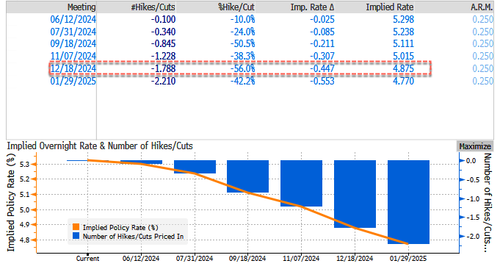




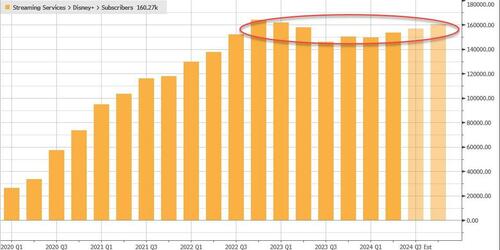



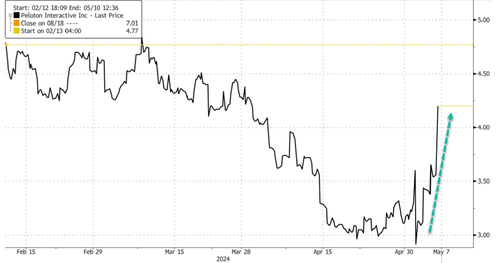
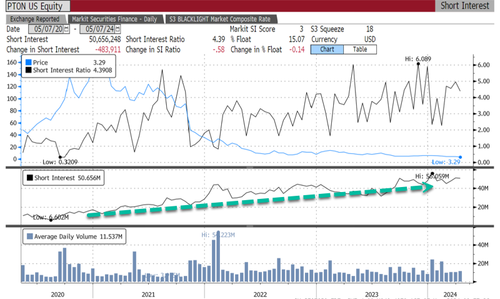

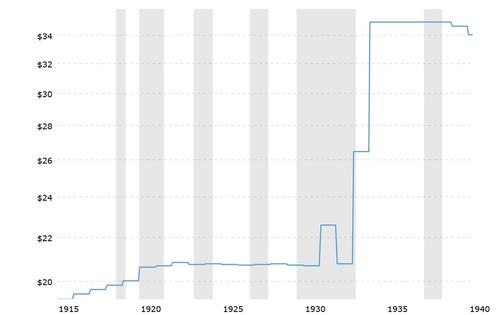
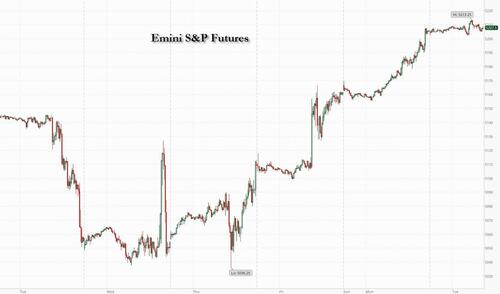


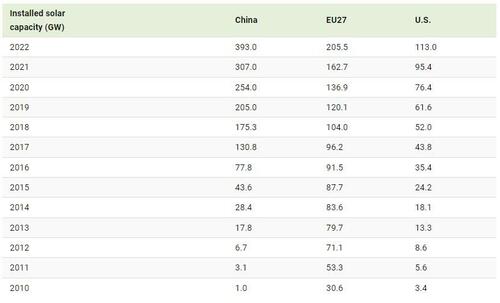
 A 1-year-old child receives a Pfizer COVID-19 vaccination in Seattle, Wash., on June 21, 2022. (David Ryder/Getty Images)
A 1-year-old child receives a Pfizer COVID-19 vaccination in Seattle, Wash., on June 21, 2022. (David Ryder/Getty Images)


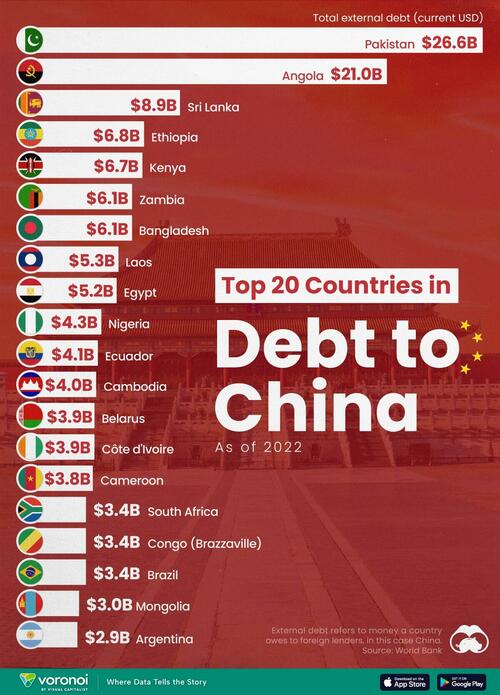


Recent comments